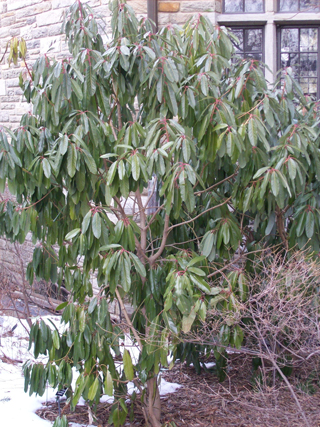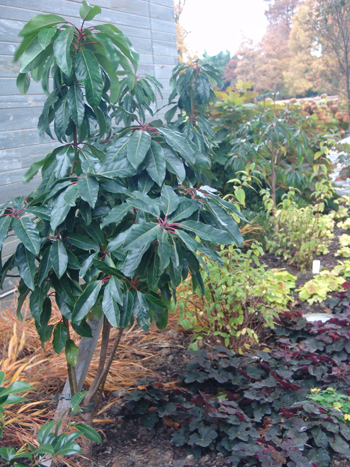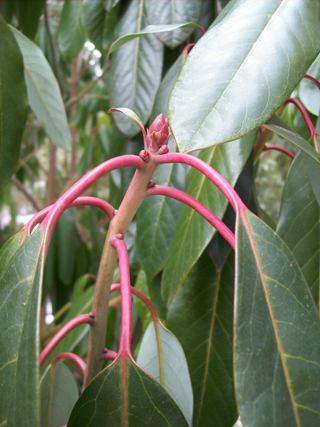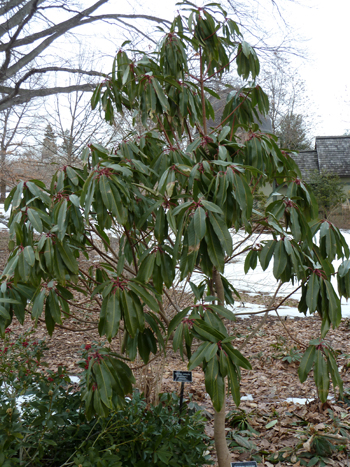 January will be a month to remember. Twenty-nine of the thirty-one days recorded temperatures below freezing. The record low was eight degrees on January 24th. With that said the next few weeks will reveal how marginally hardy plants fared.
January will be a month to remember. Twenty-nine of the thirty-one days recorded temperatures below freezing. The record low was eight degrees on January 24th. With that said the next few weeks will reveal how marginally hardy plants fared.
The mission of the Scott Arboretum is to grow and display plants that can be grown by gardeners in the great Delaware Valley area. Arthur Hoyt Scott, for which the arboretum was named and founded, “wished to make it possible for a beginner in gardening to visit Swarthmore and see plants suitable for his own conditions.” Daphniphyllum himalaense ssp. macropodum breezed through January’s frigid conditions and has shown to be a plant worthy of greater garden consideration.

Daphniphyllum himalaense ssp. macropodum in the Gold Medal Garden. photo credit: R. Robert
Interesting lore surrounds the genus, Daphniphyllum. The common name in Japanese is Yuzuri-ha which means that the old leaf is replaced by the new leaf in the next season. Young leaves give thanks and respect to the old leaves for the nourishment they provide during the winter. Thus, the plant is always evergreen. In Japanese culture, the plant is used to help celebrate the new year and acknowledge the good relationship of young and older generations.

The red petiole of Daphniphyllum himalaense ssp. macropodum. photo credit: J. Coceano
Native to Asia, one might mistake the shrub for a rhododendron. Large, simple, leathery leaves, glossy above and glabrous beneath, are borne in whorls at the branch tips. Leaves frequently bear long red petioles and midribs. Plants are dioecious; meaning separate male and female plants exist. Inconspicuous flowers bloom in May/June. If male and female plants are in close proximity, female daphniphyllum bear bluish black drupes. Single plants will not bear fruit.
It is generally suggested to plant Daphniphyllum in a partially shaded location. Curator Andrew Bunting has had success with a specimen planted in dry shade of a Picea abies. This evergreen shrub can reach 20’ tall and wide and the species is hardy in zones 7-9, perhaps into 6 in a sheltered location.
Numerous Daphniphyllum have been planted at the Scott Arboretum. Exposure ranges from choice microclimates afforded from nearby buildings, to open, exposed settings. To date, no dieback or leaf burn has been witnessed.

Daphinphyllum macropodum showcased in the Terry Shane Teaching Garden. photo credit: J. Coceano
Daphniphyllum shows potential for many uses in the landscape. If budget allows, the shrub is an ideal choice to screen or provide a green backdrop to frame the garden. A beautiful specimen provides a focal point for visitors to reflect upon as they enter the Terry Shane Teaching Garden. Consider incorporating Daphniphyllum into your garden – several species will be available at the 2011 Scott Associates’ Plant Sale, including Daphniphyllum chartaceum and Daphniphyllum longiracemosum.
